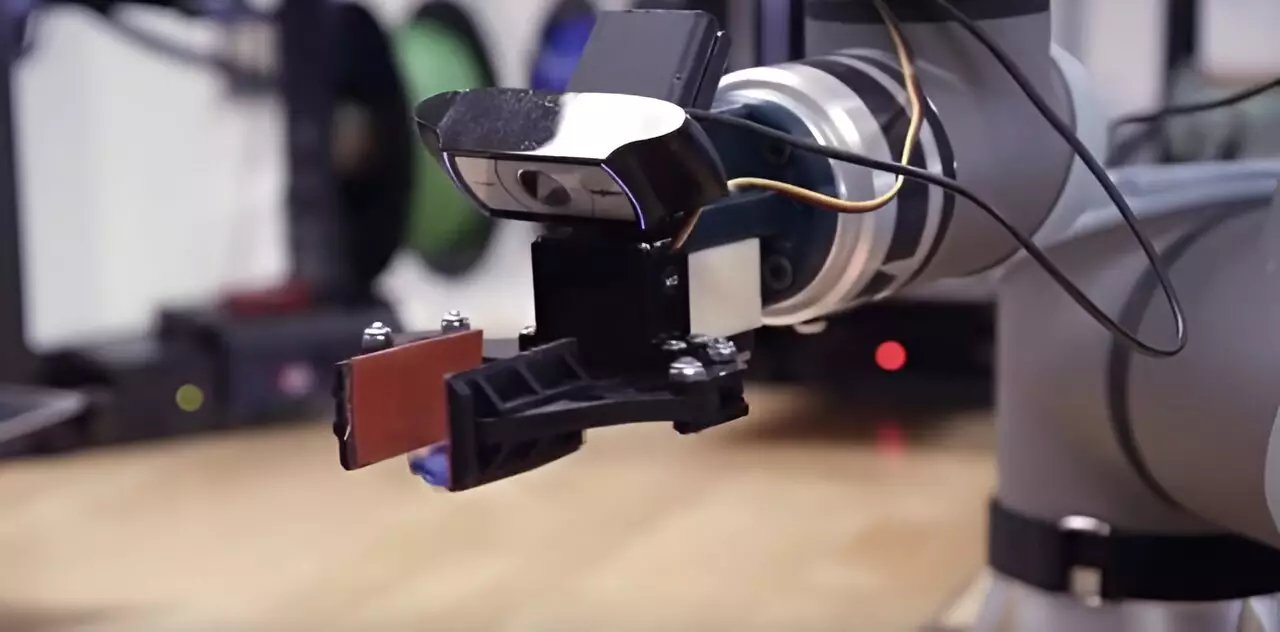In a cutting-edge lab at Boston University’s College of Engineering, a revolutionary experiment unfolds as a robot arm meticulously drops small, plastic objects into a waiting box below. These feather-light, cylindrical pieces are no ordinary creations; each one is the result of an intricate process of robot autonomy aimed at discovering the most energy-efficient shape possible. The robot, aptly named MAMA BEAR, creates these objects with a 3D printer, crushes them with immense pressure, and meticulously records the data to optimize their design for energy absorption efficiency. The impact of this research could potentially revolutionize various industries, from electronics packaging to sports gear.
Led by Keith Brown, an associate professor of mechanical engineering, and his dedicated team in the KABlab, MAMA BEAR has embarked on a mission to develop structures that excel in energy absorption capabilities. Through Bayesian optimization, the robot continuously refines the design of these 3D structures, gradually improving their ability to withstand crushing forces. This meticulous process has led to the creation of over 25,000 unique shapes, each building on the insights gained from previous experiments. The potential applications of such advanced energy-absorbing structures are vast, ranging from enhancing the safety features of vehicles to improving protective gear for athletes.
After years of tireless experimentation and data collection, the lab witnessed a groundbreaking moment in January 2023 when MAMA BEAR achieved a record-breaking energy absorption efficiency of 75%. This remarkable feat surpassed the previous best-known efficiency of 71%, signaling a significant advancement in the field of mechanical engineering. The unprecedented success of this research has been documented in the prestigious journal Nature Communications, highlighting the impact of autonomous robotic research on pushing the boundaries of innovation.
The implications of this research stretch beyond the confines of the lab, as the data gathered by MAMA BEAR is already being utilized to design new helmet padding for US Army soldiers. Collaborating with industry partners and experts like Emily Whiting, an associate professor of computer science, the team at Boston University is leveraging the wealth of mechanical data to enhance practical applications. By incorporating the insights gained from MAMA BEAR’s experiments, researchers are working towards creating protective gear that offers optimal comfort and safety for those in high-risk environments.
Keith Brown’s vision for autonomous robotic research extends far beyond the achievements of MAMA BEAR. From the nano BEAR, which explores molecular behaviors, to the PANDA BEAR, designed for polymer analysis, Brown’s lab is committed to leveraging advanced technologies for accelerated research outcomes. By integrating machine learning and automation into their innovative projects, the team aims to revolutionize the research process, making it more efficient and cost-effective. The potential for autonomous research extends to diverse fields, offering scientists and engineers the opportunity to explore uncharted territories and break new ground in their respective disciplines.
As the team at Boston University continues to push the boundaries of autonomous research, the possibilities for further breakthroughs are endless. With a database of over 25,000 meticulously tested structures, the lab is poised to uncover new insights and applications that could shape the future of engineering and design. While the record-breaking efficiency achieved by MAMA BEAR marks a significant milestone, Keith Brown emphasizes that the quest for maximum efficiency is an ongoing journey. By harnessing the power of autonomous research, the team at Boston University is poised to unlock unprecedented discoveries that will redefine the landscape of innovation for years to come.


Leave a Reply